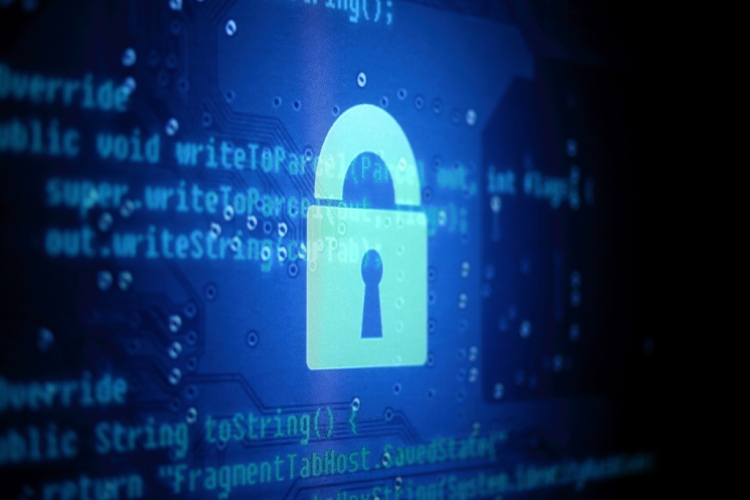 This post outlines some configuration changes which can enhance the security of 802.1X EAP methods PEAP and EAP-TTLS, which use a temporary layer 2 TLS tunnel to protect a less secure inner authentication method. While EAP-TLS doesn’t create a full TLS tunnel, it does use a TLS handshake to provide keying material for the four-way handshake. It needs strong TLS too.
This post outlines some configuration changes which can enhance the security of 802.1X EAP methods PEAP and EAP-TTLS, which use a temporary layer 2 TLS tunnel to protect a less secure inner authentication method. While EAP-TLS doesn’t create a full TLS tunnel, it does use a TLS handshake to provide keying material for the four-way handshake. It needs strong TLS too.
Standard 802.1X security best practices should also be implemented such as using strong passwords, disabling insecure EAP methods, disabling TKIP, proper supplicant configuration, deploying sha-2 certificates, and anonymous outer usernames. The focus here is the TLS tunnel exclusively.
Not all RADIUS servers can implement all of these suggestions, but some can certainly do more than others. My experience has been with Microsoft NPS and FreeRADIUS servers so that is what I’ll refer to when discussing specific implementations. I welcome input from Aruba ClearPass and Cisco ISE administrators on configuring those servers as well.
Why go through all the trouble? It turns out the same encryption techniques that are used by web clients and servers to protect data in HTTPS sessions are also used when EAP methods rely on a TLS encrypted session. Ask any web server admin, and they’ll tell you that not all HTTPS is created equally. The same vulnerabilities that web server admins deal with exist in TLS-assisted EAP methods used on the WLAN as well. There is a lot to be learned from the TLS best practices that are recommended for web server admins.
At the end of the day, the TLS session is all that stands between user credentials and would-be hackers. It needs careful consideration to verify that it is meeting current security standards.
Here’s what to do.
Disable SSL
We’re talking specifically about SSLv2 and SSLv3 here, not TLS, the collection of which is often referred to simply as “SSL.” SSLv2 and SSLv3 were cracked long ago.
Consider TLS Methods
TLS 1.2 is the most secure TLS method available, so why not disable TLS 1.0 and TLS 1.1? Right now supplicant support for TLS 1.1 and TLS 1.2 is far from universal, and TLS 1.0 with strong ciphers is still considered secure. Keep TLS 1.0 enabled for now.
Disable Weak Cipher Suites
Cipher suites are the specific encryption algorithms that are used in a TLS session. Supplicants and servers support a broad range of them, and some of them are better than others. Many RADIUS servers have older insecure cipher suites enabled by default. This allows old supplicants that do not support newer cipher suites to still function. Unless you have older supplicants, you can disable many of these cipher suites to enhance 802.1X security.
A current listing of strong cipher suites can be found at Cipherli.st. While the website focuses on web server configuration, TLS is TLS.
Be aware that EAP-TLS requires TLS_RSA_WITH_3DES_EDE_CBC_SHA.
Microsoft NPS
Microsoft NPS relies on Schannel to provide encryption for TLS-tunneled EAP methods. In order to control the protocols Schannel uses, an administrator must alter these registry keys. Note that changing these keys affects all TLS functionality on the server, so if you run IIS or RDS with TLS, these changes will affect those applications as well. Proceed with caution. The registry keys can be found in:
[HKEY_LOCAL_MACHINE\SYSTEM\CurrentControlSet\Control\SecurityProviders\Schannel\]
A full listing of cipher suites supported by Schannel can be found here.
If the prospect of manually editing dozens of registry keys on a Windows Server doesn’t appeal to you, the good people at Nartac Software have developed an application that allows these changes to be managed in a user-friendly GUI interface. IIS Crypto allows you to make all of the registry settings necessary for this, while also including some handy templates including Best Practices, PCI, FIPS 140-2, and Defaults.
Here is IIS Crypto displaying the default Schannel configuration of a Windows Server 2012 R2 server. There is a lot not to like here…
And here is the Best Practices template. Note the obsolete protocols and cipher suites that are disabled, and the order in which cipher suites are prefered is updated as well.
Be aware that manually taking control of the Schannel TLS configuration means you’re in charge of it going forward. If Microsoft updates the default configuration, your manual config may still be in place. Stay up-to-date on new TLS vulnerabilities and periodically review your configuration for needed changes.
FreeRADIUS
FreeRADIUS 3 is the current supported stable release and you should be thinking about upgrading to it if you have not already. SSLv2 and SSLv3 are not supported by FreeRADIUS 3, only TLS 1.0, TLS 1.1, and TLS 1.2.
For FreeRADIUS to require stronger cipher suites, add this to the EAP-TLS configuration in the “eap” configuration file. Alternatively, specify a colon-separated list of specific cipher suites.
cipher_list = "HIGH"
Also be aware that FreeRADIUS 2.2.6 and 3.0.7 and contain a critical bug that prevents successful TLS 1.2 sessions from starting. You should update these servers as soon as possible.
Harden Supplicants Too
Few 802.1X supplicants allow you to alter their TLS configuration. The best thing to do with supplicants is to routinely install system updates and retire clients that are EOL.
Documentation for the TLS capabilities of client supplicants is hard to come by. Microsoft published an update to Windows 7 and above to allow the use of TLS 1.1 and TLS 1.2 in its 802.1X supplicant, if configured manually for now. wpa_supplicant for Linux supports TLS 1.2 in version 2.0 and version 2.6 enabled it by default. TLS 1.2 is the default TLS version used in the supplicants for Windows 10, Mac OS 10.11, iOS 9, and Android 6.0 (Update: It appears that Apple has deferred their decision to default to TLS 1.2 in iOS 9/ Mac OS 10.11 until a later release).
Lab it Up
To know definitively what a client supplicant is capable of, run a packet capture on TLS-tunneled EAP authentication and observe the TLS negotiation frames, or TLS handshake, that occur right after 802.11 association and EAP identity request/response frames.
The client will send a “Client Hello” frame in which Wireshark will mark as a TLS protocol frame. This frame includes the TLS version requested by the client along with its supported cipher suites. The TLS version is the highest version the client supports.
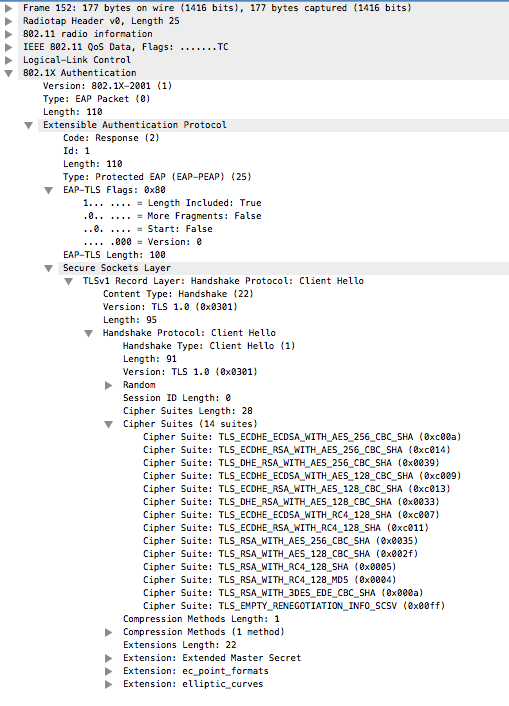
Next, the RADIUS server will respond with a “Server Hello” frame which specifies the TLS version and cipher suite to be used during the TLS session, and includes the server certificate as well. The server will choose the best cipher suite that both client and server support and the highest TLS version that both support as well.
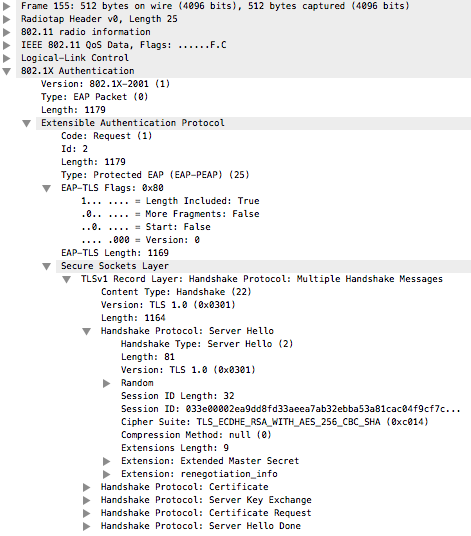
A few more frames are exchanged to setup the TLS session, and then EAP authentication takes place within the encrypted TLS session. It’s these first two frames that are of most concern when documenting client TLS capabilities.
This is also a useful technique to use to verify that highly secure TLS encryption is occurring in production.
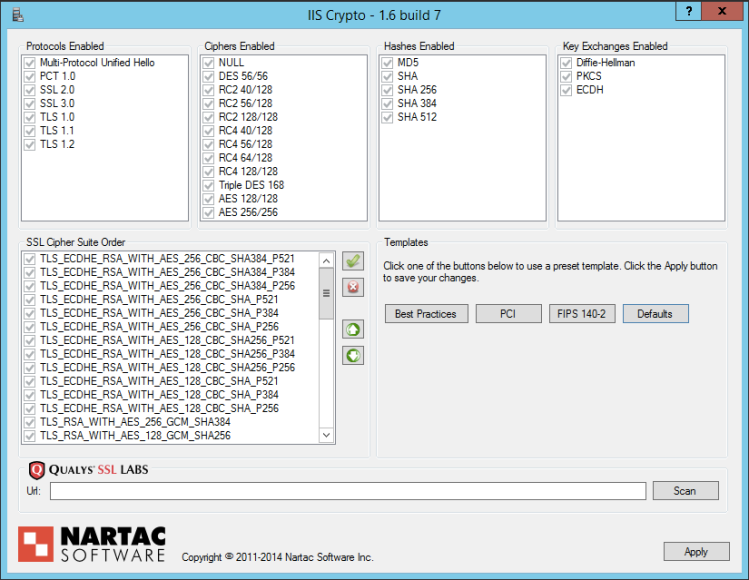
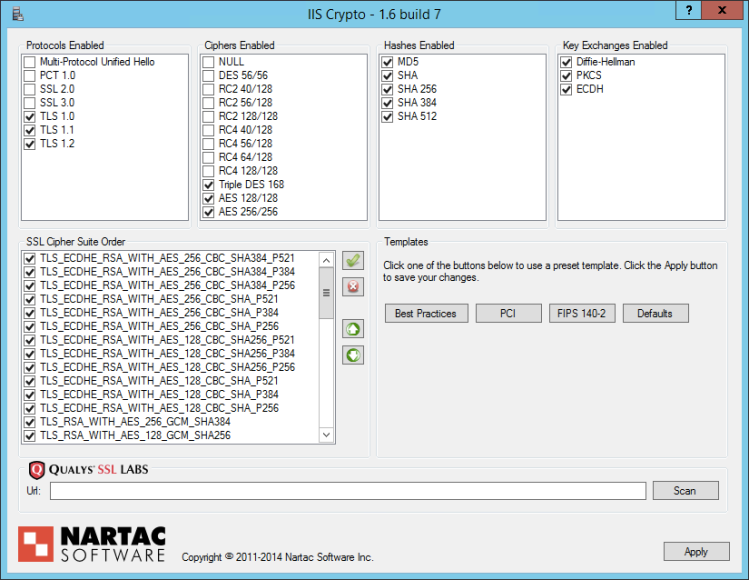
Jim – You say that the iOS 9 supplicant uses TLS 1.2 by default. This is not what I’m seeing. Using FR 3.0.11 and iOS 10.2, a packet capture shows the “Client Hello” from the iOS supplicant declaring TLS 1.0. Windows 10 and Android packet captures show them declaring TLS 1.2. But all iPhones I have tested show them offering only TLS 1.0. However, even though iOS is declaring TLS 1.0, it is offering a couple of 1.2 cipher suites, e.g. 0xc027 and 0xc028. I have not been able to find any discussion about this. Have you actually captured an iOS – FreeRADIUS TLS handshake and confirmed that iOS was offering TLS 1.2?
LikeLike
Thanks for the comment. I have not done a pcap to see this in the wild, and I have had a hard time finding the documentation I relied on for that claim. It appears that Apple planned to default to TLS 1.2 with iOS 9 but then deferred that for a later release. I’ll update this post. Nick Lowe is a great source on this:
https://community.aerohive.com/aerohive/topics/802-1x-compatibility-issue-with-freeradius-and-radiator-with-forthcoming-ios-9-and-os-x-el-capitan
LikeLike
BTW – This is an excellent article. Thanks much for your post.
I just want to update your readers that I have posted to numerous boards: Educause, Apple Developer, Aruba and back to Nick Lowe at Aerohive. I have peers who have also checked with people they know. The unanimous finding is that Apple does not support TLS 1.2 in 802.1X. Not even in the most recent releases of its software, iOS 10.2 and OS X 10.11. They are still on TLS 1.0. Current Android and Windows clients use TLS 1.2. Neither does Apple speak to this issue anywhere. I have also emailed an inquiry to their security group (product-security@apple.com) but have not received a response.
LikeLiked by 1 person
Update: With the release of iOS 11.0 in September 2017, the iPhone now supports TLS 1.2 for 802.1X. At the same time, Apple released OS updates for all their other products and this change was also included in all those updates. e.g. https://support.apple.com/en-us/HT208112
LikeLike